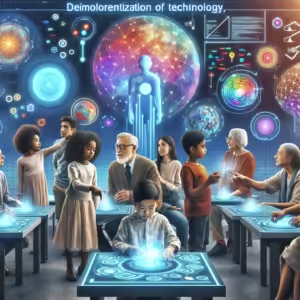Understanding Combat PTSD
Post-Traumatic Stress Disorder (PTSD) has long been a significant concern for military veterans and active-duty personnel exposed to the harrowing realities of combat. This condition can manifest through a variety of symptoms, including flashbacks, severe anxiety, and uncontrollable thoughts about traumatic events. For many, coping with PTSD can be a daily struggle, impacting personal relationships and quality of life.
The Role of AI in Mental Health
In recent years, Artificial Intelligence (AI) has started to play a prominent role in mental health treatment and monitoring. Its capabilities to analyze large datasets and recognize patterns make it a formidable tool in tackling complex health issues like PTSD. AI technologies are now being increasingly integrated into therapy, providing new methods and avenues for healing.
Data Analysis and Early Detection
AI excels in analyzing vast amounts of data quickly and efficiently. Within the context of mental health, this means AI systems can sift through a patient’s history, symptoms, and diagnostic information to identify patterns that could predict or indicate PTSD. These findings are assisting healthcare professionals in diagnosing PTSD earlier and with increased accuracy, leading to timely interventions.
- Using algorithms to assess risk factors for PTSD
- Early warning systems for those susceptible to developing PTSD
AI-Powered Therapy Solutions
AI has the potential to reshape how therapy is delivered. Virtual reality (VR) and augmented reality (AR) treatments are emerging as effective tools for exposure therapy, a common method used to treat PTSD. These technologies, powered by AI, provide controlled and safe environments where individuals can confront troubling memories under the supervision of a trained therapist.
- AI-driven VR therapy simulates combat scenarios safely
- AR applications assist in real-world setting confrontations
Human-AI Collaboration in Treatment
While AI technologies offer promising tools, the collaboration between AI and human healthcare providers remains crucial. AI’s strength lies in its ability to handle data and identify patterns, while human therapists bring empathy, intuition, and nuanced understanding to the treatment process.
Enhancing Traditional Therapies
AI can enhance traditional therapeutic approaches used for combat PTSD, such as cognitive-behavioral therapy (CBT). By providing supplementary data and insights, AI allows therapists to tailor treatment approaches better suited to an individual patient’s needs, increasing the potential for successful outcomes.
- Customized therapy plans for patients
- Real-time data feeds in therapy sessions
AI as a Support Tool for Therapists
Therapists leveraging AI tools can stay informed of the latest treatment protocols and research without having to sift through extensive data manually. AI systems can recommend treatment paths, suggest adjustments, and track patient progress over time, freeing therapists to focus more on direct patient interaction.
- AI-driven insights on therapy effectiveness
- Streamlined access to cutting-edge research
The Benefits and Challenges of AI Integration
Even with its numerous benefits, integrating AI into PTSD treatment is not without challenges. Ensuring the privacy of sensitive patient information, maintaining high ethical standards, and overcoming resistance to technology among healthcare providers are some of the hurdles needing attention.
Addressing Privacy Concerns
With AI systems relying heavily on data collection, ensuring data security and patient privacy is paramount. Advanced encryption methods and stringent data protection policies must be implemented to prevent unauthorized access and misuse of sensitive information.
- Adopting privacy-first AI models
- Strict compliance with data protection laws
Continual Human Oversight
AI applications in mental health must be continually monitored and evaluated by healthcare professionals. This oversight ensures that AI tools remain beneficial and do not inadvertently contribute to patient distress or ineffective treatment.
- Regular audits of AI systems for accuracy and safety
- Feedback loops for continuous improvement
The Road Ahead
The integration of AI into combat PTSD treatment is still in its early stages, but its potential is immense. By facilitating early diagnosis, enhancing therapy, and supporting clinicians, AI holds promise for transforming how PTSD is treated.
Moving forward, greater collaboration between technologists, mental health professionals, and policymakers is necessary to overcome existing challenges and maximize AI’s potential in PTSD treatment. With continuous advancements in technology, the future of healing from combat PTSD looks promising.
Future Prospects
- Improved AI systems with higher accuracy
- Broader adoption of AI-driven therapeutic tools
- Enhanced human-AI collaboration models
Through these efforts, AI has the capability to revolutionize combat PTSD recovery, offering hope to countless military personnel and veterans seeking effective healing methods.








